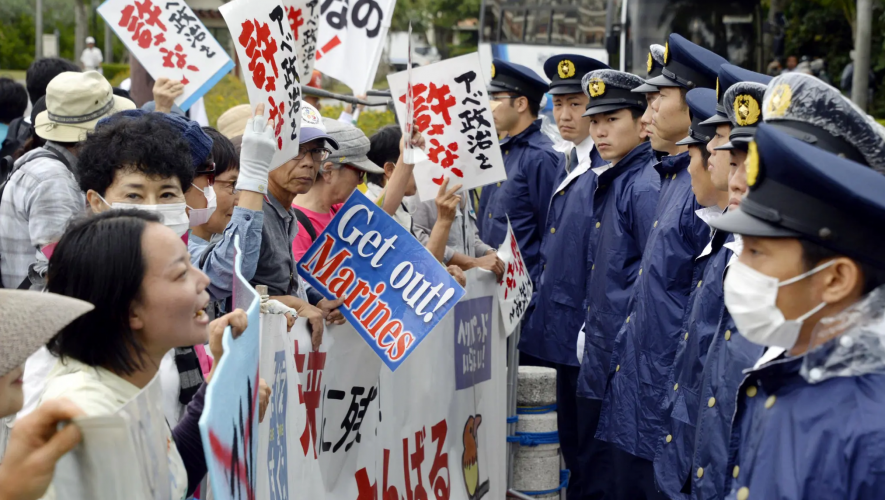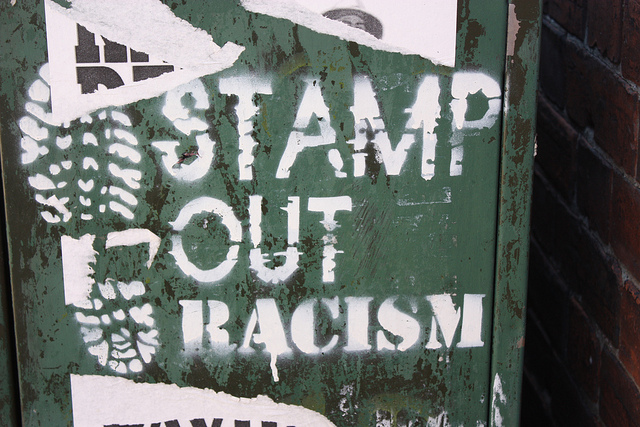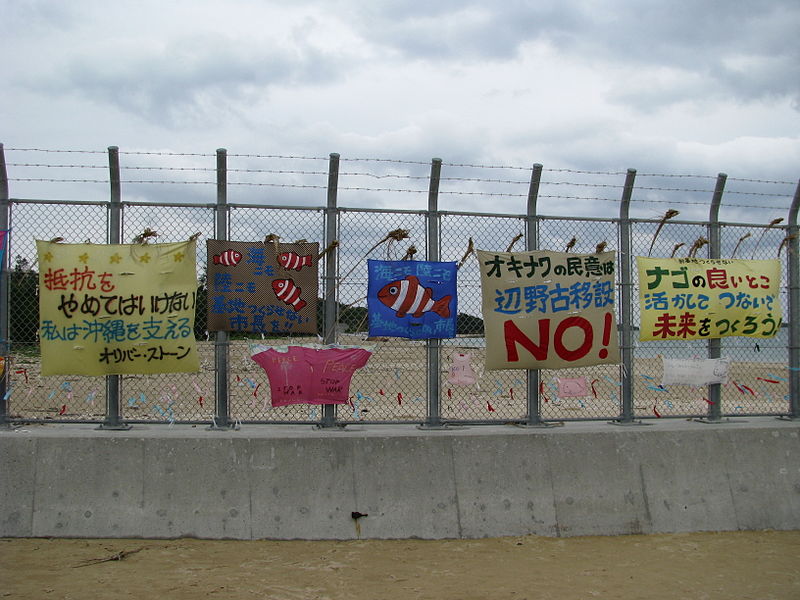This article discusses sexual assault.
In January, Nago City re-elected Mayor Toguchi Taketoyo instead of his opponent Kishimoto Yohei by roughly 15 percent. The central issue of this race was the relocation of the US Marine Corps Air Station (MCAS) Futenma from a crowded city center to the coastal Henoko district of Nago. This immensely controversial plan shaped local politics for the last two decades.
Party politics deeply shaped the race, with the nationally ruling conservative Liberal Democratic Party (LDP) and Komeito coalition supporting the victorious Toguchi and a liberal opposition coalition supporting Kishimoto. Toguchi refused to take a stance on the base issue, while Kishimito vehemently opposed its relocation. Constituents elected Toguchi for his promises to bring economic growth to the city through grants from the central government for cities that host American bases. For many voters, the stagnation of the local economy proved too much to turn down financial incentives from Tokyo, no matter the cost. Though the mayor’s office does not have complete authority over the base relocation issue, it does hold power in guiding the political momentum of the prefecture.
The LDP’s backing of Toguchi is the most recent example of its years-long push to relocate the base at Henoko in northern Okinawa despite outspoken and widespread opposition from across the prefecture. The party has repeatedly chosen to ignore the wishes of local Okinawans in favor of prioritizing national security and the US-Japan alliance.
While the Henoko controversy revolves around a US Military facility, the issue is at its core a domestic one, given Tokyo’s top-down approach. The Henoko construction plan and its implementation once again put an unreasonable burden on Okinawa in the name of national security. Toguchi’s victory greatly jeopardizes the anti-base movement in Okinawa, and with it, the democratic integrity of the prefecture’s relationship with the central government in Tokyo. In the small district of Henoko, the LDP plotted a dangerous trajectory for democracy in the prefecture and, by extension, the nation itself.
American Presence in Okinawa
American military presence is another chapter in a long history of colonial power dynamics for Okinawa. The islands, formerly known as the Kingdom of Ryukyu, were part of an independent nation before the Meiji Government colonized them in 1879. They endured semi-colonial status throughout WWII, during which the US and Japan fought in the Battle of Okinawa, a bloody conflict in which 148,000 civilians died—many by forced suicide. As part of Japan’s surrender, Japan ceded Okinawa to the Americans, where it remained under military control. In 1972, Japan regained sovereignty over the islands and incorporated it as a prefecture subject to the Japanese constitution like any other part of the country. Meanwhile, the US military kept an absurdly large presence on the islands that remains to this day.
Without question, Okinawa hosts the most American forces of any prefecture. The US military has bases on eighteen percent of Okinawa’s landmass. Approximately 70 percent of US Forces Japan facilities are in Okinawa despite the prefecture comprising just 0.6 percent of Japan’s total landmass and around 1 percent of its population.
Serious issues involving American service members persist throughout the history of their presence in the prefecture. Since 1972, American personnel committed over 580 “heinous” crimes—offenses like murder, rape, or arson—against Okinawans. Long-term US presence led to a host of other issues, ranging from the notorious chemical Agent Orange contaminating local water to hundreds of crashes involving military aircraft.
Local opposition to American presence reached a boiling point in 1995 after three American service members violently gang-raped and assaulted a twelve-year-old Okinawan schoolgirl. In response to this incident, some 85,000 Okinawans protested in the largest demonstration the prefecture had seen since its reversion to Japan. Public outrage was so strong that it triggered a revision in the US-Japan security framework to reduce the burden on Okinawa. The 1996 Special Action Committee for Okinawa (SACO) called for the relocation of Marine Corps Air Station Futenma, a base with a notoriously poor safety record.
The solutions proposed by SACO, which Tokyo and Washington negotiated between themselves, satisfied few Okinawans. In fact, the framework created more problems than it stopped.
The Relocation Issue
MCAS Futenma is a large airbase located directly in the center of Ginowan, a city of 100,000 residents. Just beyond the gates of the base are the city’s schools, hospitals, homes, and businesses, all of which experience, at best, the deafening noise of jets or helicopters flying overhead and, at worst, aircraft crashes.
Donald Rumsfeld, Secretary of Defence under Presidents Ford and Bush, once labeled Futenma “the most dangerous base in the world.” Crashes involving American aircraft based at Futenma are not uncommon. In 2016, an MV22 Osprey crashed off the coast of Nago City. In 2017, a CH-53 helicopter crashed in Takae village. Later that year, a window fell off a helicopter and landed on the playground of a local elementary school, injuring one schoolboy. Residents of Ginowan have reason to fear their protectors.
While SACO addressed the glaring need to close MCAS Futenma, its solution was unacceptable in the eyes of Okinawans. After revision of the plans in 2002, the US and Japan slated Futenma to be moved to Henoko in northern Okinawa by constructing offshore artificial land in the ecologically rich Oura Bay, home to massive coral reefs and feeding grounds of the critically endangered dugong.
Local outrage was immediate and the move galvanized anti-base activism. Henoko was soon the site of protests like sit-in human barricades, residents chaining themselves to drilling towers, and local fishing boats and canoes blocking further construction. In 2006, Tokyo and Washington agreed to build a much larger V-shaped runway at Henoko, partially connected to a pre-existing Army installation, a decision that further fueled activism given the clear opposition from locals.
Despite Tokyo’s efforts to subvert public opinion, local activism was largely successful in preventing significant construction progress at the Henoko site. Meanwhile, Okinawan politics began to shape around the relocation issue, and citizens elected governors on anti-base platforms. Locals were fighting hard and it seemed that they had a chance to prevent base construction. However, the trajectory of the relocation issue forever changed in 2012. The catalyst? Abe Shinzo began his second term as prime minister.
The Beginning of the End
Abe’s second premiership marked a new era in Japanese conservatism. In a geopolitically tense East Asia with frequent land disputes between Japan and an increasingly assertive China, the Abe cabinet and his LDP tirelessly worked towards making national security a top priority of the state.
This push for national security reforms entailed a complex realignment of the country’s defense goals, dramatically expanding the domestic and international roles and capabilities of the Japan Self Defense Forces (JSDF), and a strengthened commitment to the US-Japan alliance. Within this framework, the strategic importance of Okinawa as a military asset near the Senkaku Islands, Taiwan, and China necessitated maximum military capabilities in the prefecture. With this in mind, Abe doubled down on the Henoko plan, viewing it as necessary to maintain security in the region. This approach conveyed a clear message to Okinawans: national security takes priority over local opinion.
Abe’s ability to enact this strong approach has much to do with the immense political capital held by his party. The Liberal Democrats have more-or-less enjoyed one-party rule for most of postwar Japan’s history. Though its majority in the Upper House now relies on its ruling partner Komeito, the party remains the largest in the National Diet and dictates most of the nation’s policies.
For contentious issues like base relocation, far away from the concerns of their constituencies and stronghold districts on the mainland, the party need not fear significant repercussions. When it comes to Okinawa, the Japanese state is the LDP’s state.
Abe moved swiftly to use the full power of the LDP state to ensure local opposition did not hinder construction. In December 2013, his cabinet successfully persuaded Okinawan Governor Nakaima Hirokazu, who won on an anti-base platform, to abandon his campaign promise and give Tokyo legal permission to move forward with construction. Construction work at the site consequently started to gain momentum.
In the eyes of Okinawans, Nakaima’s reversal was unforgivable. During the 2014 gubernatorial election, Abe supported Nakaima’s pro-base re-election campaign. However, to Nakaima’s constituency, the governor crossed the line. That year, Nakaima’s anti-base opponent, Onaga Takeshi, beat him in a landslide.
Onaga’s election was pivotal in the relocation issue and Tokyo-Okinawa relations. His opposition to base construction at Henoko transformed the function of his administration into a government in resistance. The circumstances tasked his government with the profoundly undemocratic role of defending the interests and wellbeing of its citizens against their own state.
And defend they did. The Onaga administration appealed to members of the US Congress, the International Union for the Conservation of Nature, and the UN Human Rights Council. Meanwhile, thousands continued to protest at the Henoko site and in Tokyo. The Okinawan people made their dissent to the Henoko plan clear to the world. To LDP politicians, though, this made no difference.
Abe continued to throw the full power of the LDP state at Okinawa. The party dispatched ministers and major politicians such as then-Chief Cabinet Secretary Suga Yoshihide and LDP Chief Deputy Secretary-General Koizumi Shinjiro to the prefecture during key elections. During these visits, they used their positions in the GOJ to offer direct development funds to local districts to incentivize support for coalition-backed candidates. The central government also pursued legal action, like the 2015 lawsuit filed in the Naha Branch of the Fukuoka High Court against the Prefecture after Governor Onaga revoked construction permits for the new base.
The LDP state continued to push forward despite the Onaga administration’s best efforts to delay the project—including lawsuits, revoking construction permits, or publicizing the weak seabed at Henoko. In 2018, Governor Onaga passed away and his successor, Tamaki Denny, won the election on an equally anti-base platform supported by national opposition parties. Tamaki has faced much the same battle as his predecessor while resisting Tokyo’s top-down policies.
In a show of democratic defiance, Okinawans held a non-binding referendum on the base issue in 2019, in which 72 percent of voters rejected the plan to continue construction at Henoko. Though democratic norms dictate that Tokyo should at least consider the overwhelming rejection of its top-down policy among locals, Abe’s cabinet stated that it had no comment on the matter and would continue with the relocation plan.
Though Abe is now out of office, the momentum of his relocation policies remains in place. Construction continues at Henoko, and Abe’s successors have not deviated from his framework. Former Prime Minister Suga, in office until October 2021, remained committed to the base despite his years of experience in reducing Okinawa’s burden as chief cabinet secretary (concurrent minister in charge of alleviating the burden of the bases in Okinawa). Current Prime Minister Kishida Fumio likewise maintains that base relocation remains the only option.
With Okinawans having exhausted every democratic option for opposition, all signs point to the LDP’s vision for the Henoko project coming true: the US and Japan will build the base.
Abandoned by Tokyo
The pro-base Toguchi is once again mayor of Nago City, the LDP state is bypassing local opposition, and landfill projects in Oura Bay are progressing. The situation seems hopeless for most Okinawans who oppose base construction and their current dynamic with Tokyo. Indeed, it seems colonial rule never truly left Okinawa.
Since the recent push for national security reform, the LDP has failed at every chance it has had to be receptive to its citizens and shows no willingness to divert from its current path. The implications of the party’s actions reach far beyond the district of Henoko. The relocation issue casts a dark shadow on the already complicated Tokyo-Okinawa relationship and, by extension, democracy in Japan. The government and party have clearly communicated to its citizens where its priorities lie: the preservation of the US-Japan security alliance, no matter the costs. The party’s actions threaten to solidify tension between the prefecture and the nation.
The base relocation issue has surely been the most divisive issue within the history of Tokyo-Okinawa relations and the hosting of US Forces more broadly. Since 1995, no political issue has served as a more uniting cause for Okinawans in opposition to their troubled relationship with Tokyo. Further, no prefecture in Japan has ever expressed more opposition to a national policy on local, national, and international stages. The current course of events indicates that democracy within the bilateral relationship will continue to deteriorate rapidly.
In truth, the undemocratic practices of the LDP in Okinawa are not limited to the Henoko relocation issue. In February this year, Nakayama Yoshitaka won the mayoral election in Ishigaki City with LDP and Komeito backing. Nakayama ran on a pro-base platform supporting the JSDF missile base’s construction in his city. Ishigaki is near Taiwan, a geopolitical hotspot where China may lock horns with the US and potentially Japan. Many locals remain opposed to missile systems in the city. Once again, the LDP is using state power to force the burden of national defense on the citizens of Okinawa.
In any healthy system of governance, the security of the many cannot come at the expense of the few, particularly when the few have shouldered this burden for nearly eighty years. The LDP’s actions are yet another example of the Japanese state ignoring democratically expressed opinion in Okinawa.
While national security should be a priority for any democracy, it must come at an equitable cost to all citizens. Chinese or North Korean aggression is by no means an acceptable reason to erode democratic practice in a blind commitment to security. However, it seems as though this fact has yet to be realized by LDP policymakers.
For the citizens of Okinawa and the health of Japan’s democracy, the future is bleak. The biggest threat in Okinawa and mainland Japan does not come from foreign military aggression—they come from the National Diet in Tokyo.



